I would rate red mites as being one of the biggest problems you will face when keeping chickens. Red Mites live in the cracks of chicken houses (typically under perch ends) coming out at night, crawling onto your birds for a feed.
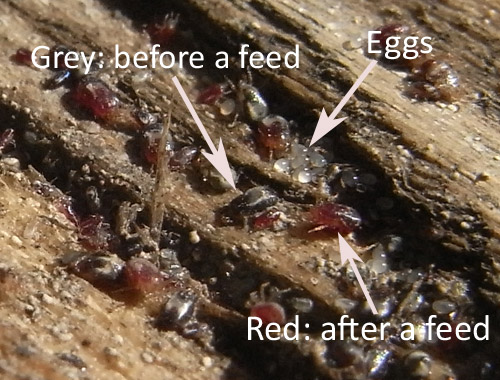
Macro shot of Red Mite in a crack on a perch. These were disturbed after a treatment with Poultry Shield.
They start off as very small greyish-white mites that swell up into red coloured mites after a feed and at their biggest are only 1mm so small numbers of them can be hard to spot unless you know what to look for.
You will often find a grey ash like deposit around perch ends which is where the mites have been and if you lift the perch, you will see clumps of mites.
Red Mite in chickens’ houses are active during the warmer months, usually May to October and will become dormant over the winter. They multiply at an incredible rate: their life cycle is just 7-10 days. In other words from hatching from an egg to being an adult laying hundreds of eggs takes just a week if conditions are right.
Be Proactive.
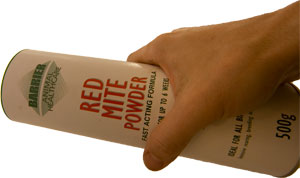 The best course of action is to check for red mite routinely when you clean your chicken house out and use some preventative treatment to the house before they get a hold. You will get to know the places to look and once you have found small numbers of them, you can treat the house to keep numbers under control. See my ‘preventative measures’ below
The best course of action is to check for red mite routinely when you clean your chicken house out and use some preventative treatment to the house before they get a hold. You will get to know the places to look and once you have found small numbers of them, you can treat the house to keep numbers under control. See my ‘preventative measures’ below
Are there Red Mite in your Chicken House?
People normally discover Red Mite when they are over-run by them. When hens are being bitten, they can refuse to go in to roost at night, they will become anaemic and their combs will go pale. They will often stop laying and you may find red blood stains on eggs (squashed Red Mites). Eventually, you will start to see losses in the flock.
Checking for Red Mite in Chickens Houses
Red Mite will hide away in the daytime but can often be seen if you lift perches, examining the ends. They will usually come swarming out if you treat the cracks with Poultry Shield but by far the easiest way to check to see if there are red mite is to take a piece of white kitchen roll and to rub it along the underside of the perch when your hens are roosting (in the dark). Look at the tissue and if there are Red Mite heading back from their feed, they will be squashed on the kitchen roll as streaks of blood.
Getting rid of Red Mite
It is very hard to get rid of them completely so it is often better to get the numbers down and then find a way of keeping them down that doesn’t involve you spending hours on cleaning the house out. There are lots of different treatments that people use, some more effective than others but I will focus on what I do and have found to be the most successful for me.
If you haven’t got red mite and the weather is warm enough for them (May to October in the UK) then skip step 1 and go straight to step 2. Preventative Measures.
1. Getting rid of an infestation.
If you find lots of red mite in the coop, it’s time for a big clean up that will take a couple of hours initially, then an hour every 5 to 7 days for at least 2 more weeks.
The products I have found to work the best (that are relatively safe) are Poultry Shield and Diatom. These two are not ‘knock down’ products as such, they do take a little while to work but are none the less very effective. I also use Red Mite Powder on the hens themselves to help them through the night when the Mites are active.
You can BUY Poultry Shield from Amazon Here.
Here is what I do with the Poultry Shield.
- Remove all birds from the house.
- Strip the house down as much as possible.
- Clean the house out – be careful where the bedding is going as red mite live for 6 months without a feed and will find a new home If they can. Ideally seal the bedding in bin bags or burn.
- Mix up as many watering cans of poultry shield mixture as is needed, as per the instructions on the label 1 part to 9 parts water.
- ‘Water’ all cracks in the chicken house, concentrating where there are perch ends and concentrations of red mite.
- Leave to soak for 15 minutes
- Red mites will be coming out. Cover them and the cracks with poultry shield again.
- Wait 15 minutes
- Hose out the house, concentrating on getting the pressure jet into the cracks and so on.
- Leave the house to dry.
Poultry Shield is a mild detergent and ‘washes’ the waxy coat off the red mites. It is also good for removing organic matter from the hen house so is useful for cleaning. I wouldn’t be without this!
After using the Poultry Shield, when the house is dry, I use Diatom. Diatom is made of micro skeletons of fossilised remains of diatoms. These were once a kind of algae found in water. They are microscopically sharp and pierce the outer waxy coating of the mites which causes them to dry out and die.
The second step also double up as my ‘preventative’ measures if you haven’t yet got a bad infestation
You can BUY Diatom from Amazon HERE
2. Preventative Measures
- Dust the ends of the perches / nest boxes and where ever else you found concentrations of red mites when cleaning.
- Rub as much into the perches as you can. Red mite will avoid the diatom and will crawl around it if they can, so make sure they have to crawl through it to get a feed.
- Repeat every couple of days for as long as you see signs of red mite in the coop.
Repeat the whole cleaning process if there are still lots of mites in 5 to 7 days. You will find you might not need to spend as long on the washing as there won’t be as many mites.
Very Important: Make sure you repeat it before 7 days so that the mites don’t have a chance to lay more eggs. A few mites become a lot in a very short space of time!
If you have a felt roof on your chicken house and they get underneath, it is usually impossible to get rid of them without removing the felt, cleaning and re-felting. My page on Chicken Houses gives more information.
Finally, I will dust the hens down between their feathers with Red Mite Powder to give them some respite during the night when the mites are active.
Beware of what you read!
There is a lot of information written about these troublesome ectoparasites on the internet these days, much of it re-written and re-spun. When I started writing about them, there was little available online. Strangely, some small errors that I had introduced on my page that I corrected in an update pop up frequently on other websites. Running a Google image search often uncovers companies that have used my copyrighted images! I make regular checks to try to stop this from happening.
If you wish to learn more about red mite then I would encourage you to read the guide to red mite on poultrykeeper.com. This is a reliable source of information and is regularly updated.

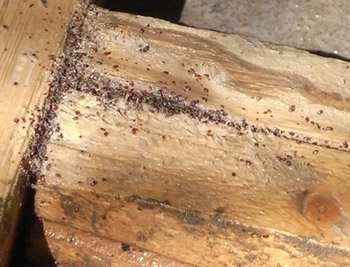
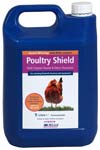
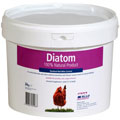
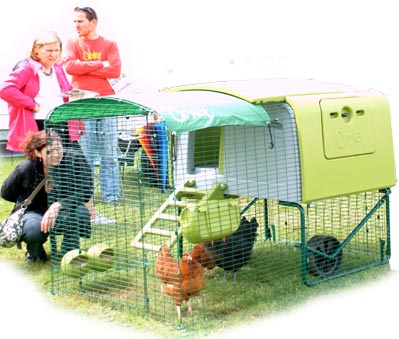
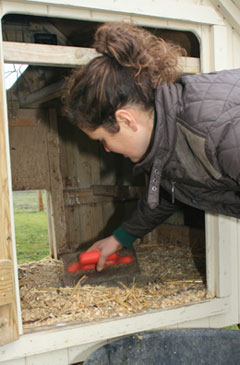
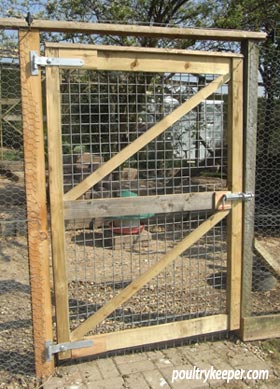
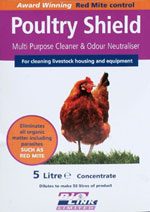
one additional item–my d.e. arrived as i was putting the coop back together so i used it as directed and sprinkled a little on each chickens back feathers, put some in their “sand box”, nests and on their roost. what is the best method to treat lice–will this take care of it?
just another update–my 1 chicken did not make it but i have added ash/sand/sawdust pans to the inside coop and the hens are having a hayday–they are so efficient in dusting themselves! i did get some adams flea and tick mist and have used it when the girls are outside in the scratch pen. the multiple efforts seem to be paying off! i did break down and put some sevin in the cracks and under the nesting material as i was getting crazy trying to provide some comfort for the hens and getting rid of the little visitors.
Hi,
I have a pony who just moved into a stable that was used for chickens, they were moved out a couple of months ago. 2 days after moving in, my pony is covered in itchy raised bumps allover, and I am wondering whether it could be mites from the chickens? How do I tell, what can I do about it? The stable is brick built but has wooden windows and door and a felt-like roof with wooden rafters. I also have the wood pellet bedding down for my pony, as a deep bed. Please help, my poor boy is very miserable!
Thank you,
Debi
It could be red mite – they will bite other animals too when hungry but I doubt it as they normally crawl along perches to get to chickens that roost in one place. They don’t have any luck with ducks as they move around and don’t roost so I would imagine that it would be the same for horses unless they stand very still in one place near the cracks.
You can find them at night – so I would check with a torch.
My girls got infected with chicken mites about 10months ago. It was reasonably easy to get the girls mite free but the shed has been another matter. I have very sucessfully turned a big 1000ltr. wheelie bin with a drop down side into a chicken coop. I cut hatch and several ventilation slits and used cat baskets as nest and roost boxes. Padding it all out with cardboard and shavings which I burn when I clean them out. All plastic can be cleaned spottlesly and easily (bleach and cleaners can be hosed off and bin dried in no time) so no mites can hide ( Oh and its on wheels so can be manuvered to cleaning area or drain) . Happy girls!. However a warning I have two black composters that still have mites even after soaking contents. I am still fighting that battle. The shed will get creosoted now that I have the real stuff.
I’ve had red mites in my chicken house now for 2 years. It is a constant battle. I live in Yorkshire and they are hardy brutes. They only leave off when the temperature goes below freezing. I have been spraying the house thoroughly after cleaning out the bedding and spraying the ends of the perches and the nooks and crannies where I can see their bloated red bodies every other day with 20% poultry shield solution. But still they are there. They are under control sufficiently for the hens to be not bothered by them, but I do get depressed with it all.
All the comments have made interesting reading. So I’ll try cleaning out every 5 days, letting the wood dry and more diatom powder.
Good to read about feeding them potato peelings. I have done just that, including the shoots. I hope they’ll be alright. I won’t do it again (but they did like them!). Is there anything else they shouldn’t have? I thought they’d just not eat what was bad for them.
Have a look at this page on getting rid of red mite.
I’ve done this and it certainly works if you’re persistent.